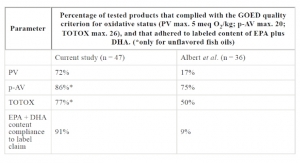What is Silent Inflammation?
Inflammation is critical for our survival against a hostile world. Without a strong inflammatory response we would be "sitting ducks" for microbial attack or injuries that never healed. However, there are two different types of inflammation. One type is "classical" inflammation, which is usually associated with pain. This type of inflammation can also result from the continuing warfare of an overactive immune system that is constantly turned on so that the body attacks itself. This is precisely what happens in the case of the autoimmune diseases like rheumatoid arthritis or irritable bowel syndrome.
Silent inflammation, on the other hand, is different from classical inflammation in that it is below the threshold of perceived pain. As a result, no action is taken to stop it, and so it lingers for years, if not decades, causing continued insults on the heart, the immune system and the brain. These continued insults often result in heart disease, cancer and Alzheimer's.
In many ways, silent inflammation can be considered "silent pain" in that the immune system continues to attack at the cellular level but without the perception of pain. Like free radicals, the existence of silent inflammation is not a disease, only an indication that potential medical problems lay ahead.
All inflammation is ultimately driven by a group of hormones known as eicosanoids. These hormones are derived from long-chain essential fatty acids and can be altered by dietary interventions. Although the search for anti-inflammatory medications to shut down the generation of inflammatory pain has been the goal of medicine since recorded history, very little progress has been made in measuring the extent of other types of inflammation other than asking a patient how much something hurts.
Thus, for years it was impossible to even discuss silent inflammation, let alone how to reverse it, until suitable clinical markers were established. The first of those markers was high sensitivity C-reactive protein (hs-CRP). This is a relatively non-specific marker of chronic low-level inflammation since it can dramatically increase with any type of infection. However, an increase in hs-CRP only indicates that low-level inflammation has already started. The actual silent inflammation occurs well before the appearance of C-reactive protein. Thus, it is critical to stop silent inflammation at the cellular level.
To measure this type of silent inflammation, a new, much more powerful clinical marker of silent inflammation has been developed. This includes the ratio of long-chain omega 6 fatty acid arachidonic acid (AA) to the long-chain omega 3 fatty acid eicosapentaenoic acid (EPA) in the isolated plasma phospholipids. The AA/EPA ratio in the blood gives a precise insight into the balance of the precursors of pro-inflammatory eicosanoids (derived from AA) and the anti-inflammatory eicosanoids (derived from EPA) in each of the 60 trillion cells in the body. It is the balance of these eicosanoid precursors that determines the actual extent of silent inflammation in the body. Using this more sophisticated clinical marker (the AA/EPA ratio), more than 75% of Americans have high levels of silent inflammation, including millions of children.
Silent inflammation also has important implications for the food and nutraceutical industries since upstream inflammatory potential is NOT a disease. In other words, addressing silent inflammation with products will not likely put a company's products into drug territory any more than products that address free radicals or free radical scavenging.
The Failure of Anti-Inflammatory Drugs
If silent inflammation is so important in accelerating chronic disease, why not simply take anti-inflammatory drugs on a lifetime basis? Anti-inflammatory drugs (aspirin, non-steroidal anti-inflammatory drugs [NSAIDs], COX-2 inhibitors, and corticosteroids) all inhibit the formation of pro-inflammatory eicosanoids. The simple answer why this approach is not fruitful is due to increased mortality. More people die each day using the correct dosage of anti-inflammatory drugs than die from AIDS. This is because anti-inflammatory drugs operate downstream by trying to inhibit the formation of pro-inflammatory eicosanoids derived from AA. Unfortunately, they function like dumb bombs in that they also inhibit the formation of anti-inflammatory eicosanoids, the end result being a constant imbalance in eicosanoid production. Chronic usage of anti-inflammatory drugs will not be the solution to the growing epidemic of silent inflammation.
Dietary Approaches for Reducing Silent Inflammation
It's all about balance. Put simply, AA and EPA must be at the ideal ratio in the body in order to counteract silent inflammation. It may be a matter of increasing EPA or decreasing AA with nutritional interventions and/or diet.
One of the primary causes of silent inflammation is increased body fat. People tend to think of stored body fat as inert. Unfortunately, stored fat is a very active source of silent inflammation. Therefore, the first line of defense against silent inflammation should be the reduction of body fat because it produces an excess of the hormone insulin. As the glycemic load of the diet increases, more insulin is secreted. This in turn activates the enzyme (delta 5 desaturase), which produces AA. The same excess insulin also accelerates the storage of excess body fat in which any excess AA is deposited. As the level of AA increases in the fat cells, more inflammatory mediators such as pro-inflammatory eicosanoids and pro-inflammatory cytokines are produced. The end result is an increase in systematic inflammation that started with an increase in silent inflammation in the adipose tissue. Thus the current obesity epidemic is in reality an epidemic of silent inflammation.
The only way to reduce excess body fat is to simultaneously reduce both insulin and calories. Of course, the secret is to do this without causing hunger. This is why low glycemic load diets, such as the Zone Diet, have been shown to be more effective than high-carbohydrate diets in reaching this goal. In fact, a recent study from Harvard Medical School has indicated that the Zone Diet is nine times more effective than the American Heart Association diet in reducing silent inflammation. In addition, recent studies conducted at Arizona State University indicate that the Atkins diet dramatically increases silent inflammation compared to the Zone Diet.
The implications for food manufacturers is great because when the correct glycemic load is combined with the appropriate amount of protein, it is possible to produce a wide variety of anti-inflammatory foods. One of the most ambitious programs to date has been the introduction of the SmartZone nutrition bars by Hershey Foods. The ultimate commercial success of these food products will determine whether or not an entirely new category of foods that can reduce silent inflammation will emerge.
Supplements for Silent Inflammation: A Focus on EPA and DHA
Without doubt, the most highly medically-verified dietary supplement to reduce silent inflammation is fish oil because it is rich in the long-chain omega 3 fatty acids EPA and docosahexaenoic acid (DHA). Fish oil reduces silent inflammation by two modes of action. The first is the reduction of the formation of AA by the feedback inhibition by EPA of the enzyme (delta 5 desaturase) that produces AA. The second is the generation of extremely powerful anti-inflammatory eicosanoids from EPA and DHA known as resolvins. This is why the AA/EPA ratio is such an exceptionally powerful clinical marker in determining the extent of silent inflammation, as it measures the upstream inflammatory potential throughout the body. One standard that has been applied in clinical studies has been the use of the same AA/EPA ratio (1.5 to 3) found in the Japanese population since it has the greatest longevity, longest health span (longevity minus years of disability) and least amount of heart disease and depression in the world today. One could lower the AA/EPA even more but that might inhibit inflammatory response against infection or inhibit injury repair.
To reach the AA/EPA ratios found in the Japanese population would require large amounts of EPA and DHA to make a significant reduction in the levels of silent inflammation. This is primarily because the standard American diet can be considered a pro-inflammatory one due to its generation of excess insulin. Some studies have indicated that in normal American subjects, approximately 2.5 grams of EPA and DHA are required on a daily basis. However, the amounts of EPA and DHA needed to reach this desired range increase with the increasing silent inflammation load in the person. For example, a person with heart disease, type 2 diabetes or obesity would require about 5 grams of EPA and DHA per day since they have significantly higher levels of silent inflammation, whereas someone with a neurological disorder such as depression, attention deficit hyperactivity disorder (ADHD), or Alzheimer's would need in excess of 10 grams of EPA and DHA per day to reduce silent inflammation as measured by the AA/EPA ratio. Thus, the amounts of EPA and DHA required are not dependent on the age, weight or gender, but rather the existing state of wellness of the person.
The need for high doses of fish oil generates two problems. The first is the dosage form. Most fish oil capsules contain only 300 mg of EPA and DHA. Therefore to achieve an appropriate intake one would have to take an unrealistic amount of capsules. The second problem is the level of contaminants (such a mercury, PCBs and dioxins) in standard fish oils. The levels of fish oil required to significantly reduce silent inflammation would also increase the intake of these contaminants. The solution to both these obstacles occurred a few years ago with the development of ultra-refined EPA/DHA concentrates. These can be considered "weapons-grade" fish oil because they are extremely rich in EPA and DHA but extremely low in toxins. As an added benefit, the taste of these ultra-refined EPA/DHA concentrates is mild enough that the oil can now be taken as a liquid supplement thereby circumventing the problems with taking an extraordinary amount of capsules. Most of the clinical studies conducted over the past five years have used these forms of fish oil with extraordinary results. The best example was the GISSI study in which approximately 1 gram (a very low dose in my opinion) of EPA and DHA was given to heart attack survivors. After 3.5 years, those getting the fish oil had 20% less cardiovascular death and a 45% reduction in sudden cardiac death compared to the placebo group. This result indicates that low-dose ultra-refined EPA/DHA concentrates are equal to statins in reducing cardiovascular mortality and probably superior in reducing sudden cardiac death.
There are other nutritional supplements that can also reduce the AA/EPA ratio because they are natural inhibitors of the (delta-5-desaturase) enzyme that produces AA. These include sesame lignans derived from sesame oil and cucurmin derived from turmeric. Of course, the benefits of all these supplements can be undermined by eating protein sources that are rich in AA (such as fatty red meat or egg yolks) or following a high-carbohydrate diet (which increases insulin levels that activate the delta-5-desaturase enzyme).
And there are other anti-inflammatory supplements that act as nutritional equivalents to anti-inflammatory drugs. These supplements operate downstream by either inhibiting the enzymes (the cyclo-oxygenase {COX} or lipo-oxygenase {LOX} enzymes) that produce pro-inflammatory eicosanoids such prostaglandins like PGE2 or leukotrienes like LTB4. These supplements would include salicylic acid from willow bark, isolated glycosides from ginger and isolated polyphenols in olive oil. As time goes on, more and more natural products will be found that are inhibitors of the COX and LOX enzymes. However, these supplements might be considered drugs by the government since they use the same mechanisms of action as used by anti-inflammatory drugs. Thus, promoting their use would likely constitute a potential drug claim. Furthermore, unlike measuring the AA/EPA ratio, there is no good clinical test for demonstrating the effects of these downstream inhibitory supplements on the generation of pro-inflammatory eicosanoids other than patient testimonials.
It should be noted that anti-inflammatory supplements are very different than antioxidants. A true anti-inflammatory supplement must either reduce the levels of precursors of pro-inflammatory eicosanoids (such as AA) or inhibit the enzymes that produce pro-inflammatory eicosanoids. As an example, vitamin E is an excellent antioxidant, but a poor anti-inflammatory supplement.
Nutragenomics & Research
People love trendy terms and nutragenomics is one of those. In its simplest definition, nutragenomics refers to the way nutrients interact with our genes. This relates to why silent inflammation is so insidious. The upstream inflammatory potential that represents silent inflammation provides the molecular kindling (i.e., increased AA levels) that a single match can be used to light a log (a strong and continuing inflammatory response). By simply choking off the substrate (AA) required for the production of pro-inflammatory eicosanoids, there is a significant decrease in the molecular signaling by these eicosanoids that can interact with genetic elements such as nuclear factor kappa-B to cause the transcription of a wide variety of additional inflammatory mediators, such as inducible COX-2 enzymes, and pro-inflammatory cytokines, such as interleukin-6 (IL-6) and tumor necrosis factor alpha (TNF-alpha).
Understanding the role of silent inflammation as the initial process in the inflammatory cascade can dramatically alter how medicine is practiced in the 21st century. It also levels the playing field. For the first time, nutrition and nutraceuticals can be clinically demonstrated to provide superior anti-inflammatory benefits (as measured by the levels of silent inflammation) compared to existing drugs because they can reduce the building blocks (AA) needed for the production of pro-inflammatory eicosanoids, while at the same time increase the levels of the building blocks (EPA) necessary for the production of anti-inflammatory eicosanoids.
If the food and nutritional supplement industries take a true leadership role in combating silent inflammation, all of the discussions of being considered a medically validated alternative to drugs actually comes to pass. To do so, however, will require more nutraceutical companies to act like drug companies, which means they must conduct clinical trials to verify product effectiveness. There are two possible approaches that can be taken to provide the impetus to do this. The first option is to change the current model to provide new regulatory classifications for making drug claims for nutraceuticals that have met an abbreviated new drug approval, but could still be sold over the counter. This is more of a long-term approach that is not likely to come to fruition in the near future. The second approach is to have the larger companies, who are willing to do the necessary clinical trials, use the results to develop stronger relationships with the professional healthcare community to amortize their scientific investments. This approach can be done today, but it requires a commitment to product and research excellence, as well as more professional marketing programs than currently exist in the nutraceutical industry.
Consequences of Ignoring Silent Inflammation
Silent inflammation appears to be a major underlying cause of the development of chronic disease. Americans have the highest levels of silent inflammation in the world. Therefore, it is probably not too surprising that we spend more per capita d than any other country for healthcare, and with increasingly disappointing results. The obesity crisis is fueling this epidemic of silent inflammation, which will eventually crush our existing healthcare system. There is no drug that can reverse silent inflammation, but there are anti-inflammatory diets and anti-inflammatory dietary supplements that can.
The actual day of reckoning will come in 2011 when the first baby boomers are able to access the substantial low cost healthcare provided by Medicare. If silent inflammation is not controlled in this group, the healthcare costs will likely bankrupt the rest of the healthcare system. Although it is highly unlikely that obesity (a primary cause of silent inflammation) will be eradicated by that time, silent inflammation can be rapidly brought under control by the use of dietary supplements that reduce AA formation. The most important of these is fish oil. The tragedy for the nutraceutical industry is that less than 1% of its sales comes from fish oil products. The sooner we recognize the growing consequences of silent inflammation, the sooner we will understand the urgency to make the necessary investments in developing nutritional approaches to help avert the coming collapse of the American healthcare system.
About the author: Dr. Barry Sears is the president of the Inflammation Research Foundation, a non-profit organization that conducts clinical research on the dietary interventions to reverse silent inflammation. He is the author the #1 New York Times best selling book, The Zone, as well as 11 other books on his Zone Diet that have sold more than 5 million copies. His most recent book, The Anti-Inflammation Zone, discusses the impact of silent inflammation on chronic disease development. He can be reached at 781-639-1214; Fax 781-639-8154; E-mail: bsears@drsears.com; Website: www.drsears.com.
| Return to top |

















